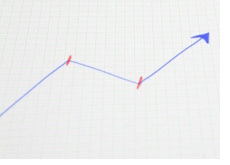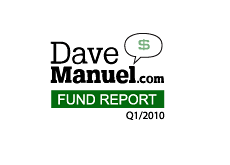What is Meant by "Short Interest" and "Short Ratio"?
 In the last article we touched a bit on short-selling. Basically, short-selling is when you bet that the price of a share will fall. So instead of buying a stock, you sell it without owning it. So let's say that you sell 1000 shares of a stock at $50. If it falls to $45, you can then "cover" your position for a $5 per share profit. Obviously, if it goes the other way, you will lose money.
In the last article we touched a bit on short-selling. Basically, short-selling is when you bet that the price of a share will fall. So instead of buying a stock, you sell it without owning it. So let's say that you sell 1000 shares of a stock at $50. If it falls to $45, you can then "cover" your position for a $5 per share profit. Obviously, if it goes the other way, you will lose money.Now, if you are fairly new to the idea of short-selling, there may be a few terms that you are unsure about. Two of the terms that we will cover today are "short interest" and "short ratio."
Let's look at Google as a real-life example. When we access their Yahoo Finance page, we scroll down and see on the right, under Share Statistics, the following pieces of information:
Shares Short - 5.5 million
Short Ratio - 0.7
Now, "short interest" and "shares short" is the same thing. This is the total number of shares that are currently short Google. So out of the 312.84 million shares outstanding, there are currently 5.5 million shares short. This sounds like a lot, but it is actually a tiny number for a big-cap company such as Google. As a point of reference, Microsoft currently has 112.88 million shares short, and 19 million shares short, just to name a couple. The extremely small number of shares short corresponds directly with Google's outrageously strong share price over the few years. Who wants to short a stock that just keeps going up?
To figure out the short ratio, you take the total number of shares that are short, and divide it by the average daily volume.
Why is this useful? It can easily tell you whether or not a stock has a high short interest in comparison to its daily average volume. If a stock has a short ratio of ten and an average daily volume of 100k shares, this means that the stock would be heavily subject to short squeezes. So, if a stock in this case reports strong earnings, there is a good chance that the stock will be able to maintain a lengthy increase due to the large number of shares that are short relative to its daily average volume. This can be very useful information when you are deciding on whether to buy a stock or not.
If you are researching a stock and notice that it has a very high number of shares short, you need to find out why. Normally this means that there is a significant amount of trouble within the company, and people are betting that the stock will fall significantly. Contrary to what some people might say, short-sellers are usually "smart" money, so I would tread carefully if you are planning on buying a stock with a large amount of short interest. Research it carefully before buying.
Filed under: Stock Market Education | General Knowledge



